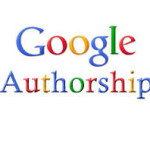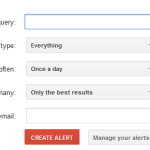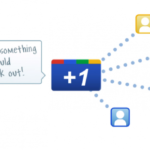5 Best Ways to Increase Google Search CTR
The first question may be–what is Google Search CTR? When you enter a query or a search term into Google, it will provide you with a list. This is not a list of pages that Google has saved. When you run a search on a website then it brings up links to pages on the website (what it has saved), but Google is just providing links to other websites. These links point at pages that are in the Google index (the ones Google has read and judged).
If a link for your website comes up, then the user is able to click on the link and go through to your page. However, no user clicks on all the links that appear from Google. A person will often move down the list of links and look for the website that is most useful to them. This is where the CTR (Click Through Rate) comes in. If a person runs a search, sees your site, and clicks the link, then that was a “Click Through”. If your website appears on the search engine results a lot, but is not clicked on very much, then the CTR is very low (your link has a low Click Through Rate). If lots of people click on your link then you have a very high CTR.
1 – Create a stunning and salable meta tag description
The meta tag description will sometimes appear on the search engine results page, so it needs to be very enticing, engaging and descriptive. The meta description does not always appear because the description part on Google is populated with the sections of your pages that hold relevant keywords. However, if the search engine is pointing at your website because the user has searched for something similar to your title or domain name, then more often than not, the meta description will appear on the search engine results page.
2 – Make your title engaging, descriptive and a hook
Your title is the thing that makes people click on your website. If your title is even slightly confusing or irrelevant, then people will simply not log onto your website. They will never click the links pointing to your website because they have no idea what to expect. And, people will not spend their free time looking at websites that hold mystery content. Make the title a bit of a hook too so that more people want to look at it.
3 – Put a short description of each page at the top of each page
Consider this to be a little bit of an introduction. Just like with the meta description tag, the first few lines of your website may appear on the search engine results page. If the first few lines of your page are nonsensical and meaningless, then your CTR will plummet. You should include a few or your website’s primary keywords in the introduction portion, and you should try not to make it too long. Around double the size of your meta tag description ought to do it.
4 – Create targeted web pages so the right people are seeing your links in their results
This means concentrating on your keywords, wording, layout, content, and even concentrating on its format. If you can focus your efforts with every page you make, then there is a good chance that your web page will only appear when your target audience are actually looking. This is going to lower your bounce rate (on your website), and will help to ensure that the readers are finding what they want in your website.
5 – Have a descriptive and keyword optimized URL
Your web page’s URLs are visible on Google’s search results, and some heavy Internet users are prone to judging your web page results via their URL. Some people will check to see if your URL looks like one that they already know is a waste of their time. They will also check to see if the URL fits the description of what they are looking for. For example, a link description that mentions “carbs” may be referring to carburetors or carbohydrates, and what is present in the URL link may give away the answer to that query.
Some URLs also look as if they are a waste of your time. Some look like the websites that just have lists of articles instead of actually taking you to the article you want. Other websites URLs will look as if they are just going to take you to a website full of advertising or viruses. That is why people are wary of URLs that are not descriptive. This is especially true when a URL is overly complex for no apparent reason, or when it does not have English words in the URL, or the URL is made up of symbols, letters and numbers.
Author’s bio:
My name is Sonia Jackson. I represent the Australian web-site http://www.essay-bag.com. We’ll help you to solve all problems with writing different essays and research papers according to the rules of the universities and colleges in Australia.







Great post Sonia!
It’s worth also mentioning that you can “over optimise” titles and descriptions, usually this is in the form of keyword stuffing, so be wary of repeating yourself multiple times. Titles and meta descriptions are your selling space on SERP’s, think of it as like a 30 second pitch but in twitter length, no second chance with it – get it right. Getting it perfect is more of an art than a science, no two websites are the same, no two markets, and no two rankings are the same on Google – so practice your art form across your site, monitor results and always keep playing with your format to find the optimal format for you.
Great post.
Thanks for the sharing this information.